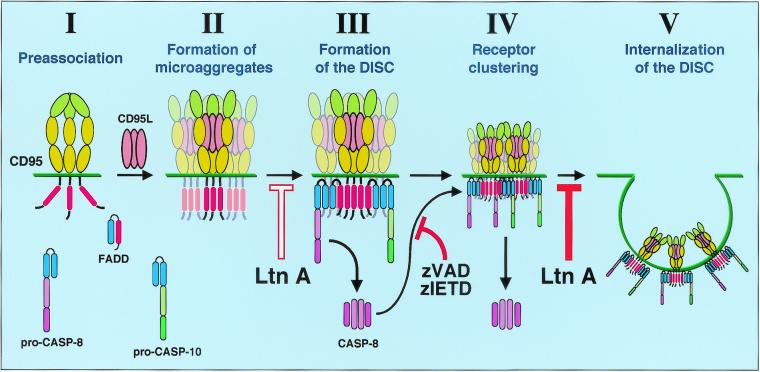FIG. 9.
The membrane-proximal events of CD95 signaling. The signal initiation phase of CD95 can be subdivided into five distinct steps. (I) Ligand-independent receptor preassociation (37). (II) Formation of microaggregates. These submicroscopic microaggregates can be detected as SDS-stable high-molecular-weight CD95 bands in SDS-PAGE (Fig. 8C). (III) Formation of the DISC. This step is dependent on actin filaments, since it can be inhibited by Ltn A (Fig. 5D). DISC components are FADD/Mort1, caspase 8, caspase 10 (unpublished data), and c-FLIP (not shown) (34). (IV) Receptor clustering. CD95 clusters can be seen by fluorescence microscopy. This step depends on generation of active caspase 8 by the DISC and can be efficiently prevented by preincubating cells with either zVAD-fmk or zIETD-fmk (Fig. 6D). Caspase 8 activation is therefore part of a positive feedback loop. (V) Internalization of the DISC. This step again is dependent on actin, since treatment of cells with Ltn A prevents internalization of the clustered receptor (Fig. 5C). Ltn A does not affect type II cells (data not shown), indicating that the actin-dependent steps are reduced or absent and explaining why type II cells form very little DISC. Blue domains, DED; red domain, DD. The N-terminal PLAD in CD95 is shown in a different green tone.

